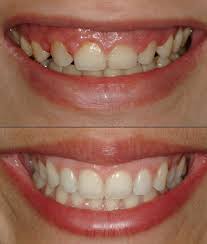Header logo
header top contact widget
Dry Mouth
What You May Be Doing To Increase Potential For Gum Disease
Posted on Apr 11, 2024 by William J. Claiborne, DDS MS
There’s a saying: “We don’t know what we don’t know.”
That applies to so much in life. With all good intentions, adults go about their days feeling they are doing what is right. However, we occasionally learn that what we thought was right is to our detriment.
For example, decades ago, people felt that rigorous scrubbing of teeth with a hard toothbrush and baking soda was a good way to clean your teeth. We now know that the hard bristles and abrasive substances can wear down tooth enamel and scrub away tender gum tissues.
And, there are ways that we actually – and unconsciously – add to the risks for developing periodontal disease.
Over the years, research has continuously shown that the bacteria of periodontal disease can have a number of harmful effects – in the mouth and further. Because these inflammatory bacteria can enter the bloodstream and travel throughout the body, research has shown that they can activate or worsen a number of serious health problems. These include:
– heart disease
– stroke
– Alzheimer’s disease and dementia
– arthritis
– diabetes
– preterm babies
– erectile dysfunction (ED)
– some cancers (including lung and pancreatic)
– obesity
Signs of gum disease include bleeding or sore gums, persistent bad breath, receded gums, and/or gums that are red rather than a healthy pink. These are warning signs since gum disease will only worsen without treatment.
As gum disease progresses, gums begin to pull away from the base of teeth, gums become very tender and bleed easily when brushing, pus pockets form on gums and teeth may shift or loosen.
Unfortunately, gum disease is ignored too often by adults in the U.S. The CDC estimates that over 47% of Americans have some level of gum disease, which is also the leading cause of tooth loss.
Bacterial overload can leave the body’s natural defense response, white blood cells, unable to conquer the infection. Thus, bacteria overload in the mouth triggers an inflammatory reaction begins, which is the beginning of gum disease.
Below are things that can increase the risk for gum disease, some of which you may not realize are contributors:
Aging: Studies have indicated that the incidence of periodontal disease increases as we get older. Over 70% of adults who are aged 65 and older have some form of gum disease.
Some Existing Health Problems: People who have diseases such as cancer or heart problems already have weaker immune systems. When the bacteria of gum disease enter the bloodstream through tears in oral tissues, harmful clotting factors and proteins can occur elsewhere in the body. Research has linked gum disease bacteria with heart disease, diabetes, stroke, preterm babies, and memory loss.
Dry Mouth: Smoking, certain medications, drinking alcohol and aging all contribute to a dry mouth. The saliva in your mouth plays an important part in removing food particles and bacteria. When insufficient saliva cannot cleanse the mouth adequately, bacteria buildup results.
Stress: It has been proven that people who endure long-term stress have a greater risk for developing diseases such as cancer, hypertension and even gum disease. Stress takes a toll on the body’s entire operation, weakening its ability to fight infection.
Medications: The side effects of some drugs can dry out oral tissues and even weaken the density of bones, opening the door for gum disease. Like your physician, your dentist should have an up-to-date list of all medications you take, including herbal supplements.
Grinding Teeth: When you grind and clench your teeth during sleep, the teeth wear down and connective oral tissues are weakened. When the tissues surrounding your teeth are vulnerable, your entire jaw bone area is exposed to certain infections, which can lead to gum disease.
Genetics: Because of genetics, you can be predisposed to develop gum disease. Research indicates that 30% of the population may be genetically susceptible to gum disease.
Gender: Periodontal disease occurs more in men than women (56% vs. 38%).
Smoking: Smoking dries out the tissues in the mouth, increasing one’s susceptibility to calculus. Research shows that smokers lose more teeth than nonsmokers and typically require longer healing times after treatment with results that are less predictable.
A periodontist is a specialist in the treatment of all stages of gum disease and in the placement of dental implants. He or she is the expert who can help to restore a bacteria-burdened “oral cavity” to a healthy state.

Dr. William Claiborne,
Biltmore Periodontics
In our Asheville periodontal dental office, we feature some of the most advanced technology in the industry. The patient benefits from these through diagnoses that are exact, more conservative treatment, and having reduced healing time. This also can mean there is less discomfort.
One of the features we provide is the LANAP Protocol Using Periolase MVP-7. LANAP (an acronym for Laser-Assisted New Attachment Procedure) is amazing technology that more efficiently and effectively treats periodontitis (advanced gum disease) with the PerioLase® MVP-7™ laser. As a minimally invasive (non-surgical) treatment for moderate to severe periodontal disease, LANAP has even been found to stimulate bone regrowth in damaged areas.
If you are experiencing symptoms of gum disease, call 828-274-9440. In our state-of-the-art Asheville periodontal dental office, our patients are treated with respect, compassion and a gentle touch. New patients are always welcome.
If dental fear has kept you from having regular dental care and you’re experiencing symptoms of gum disease, consider starting with a consultation. During this time, we can discuss comfort options, including oral and IV sedation (“twilight sleep”). Referrals are not required.
Reshaping Gum Tissues To Protect Oral Health & Enhance Smiling Appearance
Posted on Mar 21, 2024 by William J. Claiborne, DDS MS
When people think about the appearance of their smiles, it’s typically the teeth that are the focus. Everyone wants a smile that enhances appearance, instills self-confidence and gets compliments. Yet, the appearance of a smile involves more than just teeth. The “frame” of gum tissues that arch the teeth most visible in a smile have a lot to do with how a smile looks.
As a periodontal specialist in Asheville, NC, part of my specialty involves the treatment of all stages of periodontal (gum) disease, the placement of dental implants, and the contouring of gum tissues. Gum contouring is generally done for esthetic reasons but may also be advised for oral wellness.
Gums most often pull away from the base of teeth (or “recede”), exposing darker areas of the tooth. This darker area is part of the tooth’s root and highly vulnerable to damage. Recession also causes teeth to look longer and expose darker tooth root areas of the tooth. Being sensitive to hot or cold – causing a sudden jolt of pain – is often the final warning sign that the gums are not protecting tender root segments of the tooth.
Gum recession is commonly due to:
• Gum disease, which destroys gums tissues, causing them to loosen their firm grip around the base of teeth. This enables oral bacteria to penetrate beneath the gum line, reaching vulnerable bone and tissues.
• Over-vigorous toothbrushing can wear away precious gum tissues that surround the base of teeth. When using a back-&-forth scrubbing motion, or a hard toothbrush, gum tissues can be scrubbed off. Too, using abrasive substances to brush (such as baking soda) not only wear down gum tissues, they wear away tooth enamel.
• The aging process lessens hydration in the body. Because the gum tissues are moist layers that require continual hydration (supported by saliva), oral dryness can cause the gums to draw up as they become drier. Unfortunately, this creates more challenges in maintaining healthy teeth.
While gum recession is an oral health concern, it is a cosmetic issue as well. For an attractive smile, teeth should be arched by a balanced level and shape of gum tissues. When there is too much gum tissue showing above teeth or varying heights of gums arching teeth, the height and symmetry of gum tissues can be corrected by a periodontist.
For example, in a gummy smile, too much of the gum line is visible. This makes teeth look short and draws the eye to the gums rather than the teeth. Gum tissues should complement teeth with a balanced line of gum tissues. While a gummy smile is not generally problematic for one’s oral health, many people find it makes them “hold back” on smiling fully.

Before & After Of A Gummy Smile
The procedure to correct a gummy smile is a gingival lift, also known as a gum lift or gum contouring. This in-office procedure is performed to reduce and reshape highly visible gums.
In our Western NC periodontal dental office, we use a dental laser to perform a gingival lift. Our dental laser gives a precision line while only removing specific areas of the gums, leaving all surrounding tissue unharmed. This allows us to reshape the gums to create better balance in the smile.
A laser gingival lift also offers patients a more comfortable experience since it causes very little pain and therefore requires only topical anesthesia. In addition, laser treatments result in almost no bleeding and tissues tend to heal more quickly than after traditional surgery.
We also perform gum grafting that recovers areas where gum recession has occurred. This helps to protect the tooth roots and improves the appearance of the smile.
In gum grafting, we normally take a small area of tissue from the roof of the mouth and place it in the area of recession. When there is not sufficient tissue available, a graft may be from a donor source. The graft is attached to the natural gum tissue and gently sutured into the position where it corrects a smile’s appearance and reduces further recession and the potential for gum disease.
Several teeth may be involved in gum grafting when used to even out the gum line or reduce the risk of gum and bone collapse after a tooth has been lost. In these cases, cosmetic gum surgery is beneficial in reshaping excess gum and bone tissue. It also reduces sensitivity from exposed roots to hot or cold foods.
As a periodontist, I most commonly see gums that cover too much of the teeth as being due to genetics. When gums fail to cover sufficiently over the base of teeth, it’s typically the cause of recession, which can occur from several reasons (as listed prior). Regardless of why it has occurred, our goal is to provide the patient with the most healthy and esthetic outcome in a procedure that is comfortable, successful, and requires minimal healing time.
In our Asheville periodontal dental office, we offer some of the most advanced dental technology available. In addition to amazing imaging, such as Cone Beam 3D imaging, we provide Laser-Assisted New Attachment Procedure (or LANAP). This is a cutting-edge protocol to more efficiently and effectively treat periodontitis (advanced gum disease) with the PerioLase® MVP-7™ laser. Treatment is minimally invasive and helps to minimize both discomfort and recovery time. It has also been found to stimulate bone regrowth in damaged areas.
Additionally, our office offers both oral and I.V. sedation (“twilight sleep”) for complete relaxation during treatment. Sedation is administered safely by a doctor of anesthesia to provide optimal safety and comfort.
If finances have kept you from seeking out the care you need or the beautiful smile you desire, feel free to contact our friendly staff and arrange a consultation appointment. During this time, we can discuss the best options for you, cost estimates, and predicted treatment time.
We can also review several payment plans that make treatment affordable through extended, interest-free payment periods with no down payment required. These often help our patients enjoy their confident, new smiles while making easy monthly payments that are budget friendly.
Call 828-274-9440 to schedule.
Gum Disease, Tooth Loss Warnings For Smokers
Posted on Jan 29, 2024 by William J. Claiborne, DDS MS
We’re a month in to the new year. If you made the resolution to quit smoking, you may be struggling at this point. But keep up the effort. In addition to the many problems associated with smoking, your smile is also at risk.
As a periodontist in Asheville, NC, I’ve seen how significantly the habit of cigarette smoking can have on one’s smile. It’s no secret that smoking cigarettes can stain teeth and cause bad breath. However, nicotine in any form is a hazardous force in the mouth.
In studies, smokers were 3 – 6 times more likely to have gum disease than nonsmokers. One reason is because smoking is very drying to oral tissues and decreases saliva production. Less saliva means there is less of a natural ‘rinsing’ away of bacteria in the mouth. This leads to higher concentrations of oral bacteria.
Dry tissues also slows healing in the mouth. The longer it takes for tissues to heal, the greater the potential for bacterial complications.
In one study, it was found that smokers were twice as likely as non-smokers to lose teeth in the five years after completing treatment for gum disease. Smokers are also shown to respond less favorably to oral surgery treatments due to slowed healing. For the same reason, dental implants are more likely to fail in smokers.
Researchers who have studied the effects of tobacco smoke on oral tissues say it appears to interfere with the body’s natural ability to fight disease and promote healing. Apparently, smoking affects the way gum tissue responds to all types of treatment, possibly due to tobacco chemicals that interfere with blood flow to the gums. This slows the healing process and makes treatment results less favorable.
According to a study at Temple University, pipe and cigar smokers and users of smokeless tobacco (“chew”) are just as prone to implant complications than cigarette smokers. The study showed three times the amount of moderate to severe gum disease as that of non-smokers.
The American Dental Association (ADA) also warns that smoking can cause the gums to recede from teeth, exposing vulnerable tooth root sections. This enables easier entry of oral bacteria into the structures that support tooth roots. Smoking can also delay healing following periodontal therapy, extractions or implant placement. The longer it takes oral tissues to heal, the greater the risks for infection to develop.
Additionally, smoking increases the risks of oral cancer, lesions inside the mouth, periodontal (gum) disease, enamel erosion and tooth loss. It greatly reduces saliva flow in the mouth, which is a tremendous aid in removing bacteria and food particles from the mouth, helping to control bacteria levels. The condition of “dry mouth” also causes bad breath.
According to the Centers for Disease Control & Prevention (CDC), a smoker has twice the risk for gum disease compared with that of a nonsmoker. (https://www.cdc.gov/tobacco/campaign/tips/diseases/periodontal-gum-disease.html)
When a patient is diagnosed with advanced periodontal disease (periodontitis), they must make a commitment of time and expense to rid this inflammatory disease from their mouths. For those who ignore its presence or assume it will get better on its own, the disease will simply progress further.
Gum disease begins with sore gums that may bleed while brushing teeth. Or, it may cause no noticeable symptoms at all in early stages.
As it worsens, gum disease will cause frequent bad breath, tender gums that turn red, gum recession, and gums that bleed easily when brushing. Pus pockets may form on the gums. As it attacks the structures beneath the gum line, teeth may loosen or shift.
As the nation’s leading cause of adult tooth loss, it brings the hard decisions (and expense) for replacement. After all, you need teeth for eating and speaking. Do you go with dental implants? Or, do you take on the challenges that come with dentures and partials? As hard as the decisions of replacing teeth can be, gum disease can bring even more devastation with it.
Research has linked the bacteria of gum disease to serious health problems. These include heart disease, stroke, preterm babies, arthritis, diabetes, impotency, some cancers and even Alzheimer’s disease. These connections occur through the infectious bacteria of gum disease entering the bloodstream through tears in diseased gum tissues.According to the Centers for Disease Control & Prevention (CDC), a smoker has twice the risk for gum disease compared with that of a nonsmoker.
(https://www.cdc.gov/tobacco/campaign/tips/diseases/periodontal-gum-disease.html)
When a patient is diagnosed with advanced periodontal disease (periodontitis), they must make a commitment of time and expense to rid this inflammatory disease from their mouths. For those who ignore its presence or assume it will get better on its own, the disease will simply progress further.
Gum disease begins with sore gums that may bleed while brushing teeth. Or, it may cause no noticeable symptoms at all in early stages.
As it worsens, gum disease will cause frequent bad breath, tender gums that turn red, gum recession, and gums that bleed easily when brushing. Pus pockets may form on the gums. As it attacks the structures beneath the gum line, teeth may loosen or shift.
As the nation’s leading cause of adult tooth loss, it brings the hard decisions (and expense) for replacement. After all, you need teeth for eating and speaking. Do you go with dental implants? Or, do you take on the challenges that come with dentures and partials? As hard as the decisions of replacing teeth can be, gum disease can bring even more devastation with it.
Research has linked the bacteria of gum disease to serious health problems. These include heart disease, stroke, preterm babies, arthritis, diabetes, impotency, some cancers and even Alzheimer’s disease. These connections occur through the infectious bacteria of gum disease entering the bloodstream through tears in diseased gum tissues.
If you feel your smile is safe by switching to vaping (use of e-cigarettes), read on.
Because of the vape’s moist presence in the mouth, the assumption with vaping over smoking cigarettes is the “benefit” of oral dryness. However, this is easily dispelled when looking at the true facts.

While there are more than 7,000 chemicals found in the smoke of tobacco products, (including nicotine, tar, carbon monoxide, acetaldehyde and N-nitrosamines), nicotine is the primary addicting component. A study of some e-cigarette products found the vapor contains known carcinogens and toxic chemicals, as well as potentially toxic metal particles from the device itself.
The e-liquids delivered by these devices typically contain nicotine, propylene or polyethylene glycol, glycerin, and additives.
In addition to the treatment of all stages of periodontal disease, a periodontist is highly skilled in dental implant placement. Dental implants have become a leading choice in tooth replacement for many reasons, including:
• Dental implants restore one’s natural ability to bite and chew comfortably.
• Dental implants allow people to eat a healthy diet of foods, chewing thoroughly to support good digestion.
• Dental implants enhance confidence when speaking, laughing and dining in social gatherings.
• Dental implants recreate stimulation to the jaw bone like that of natural tooth roots, which helps to halt bone loss.
• Through the prevention of further bone loss, dental implants contribute to the well-big of neighboring teeth
• Dental implants slow the aging changes to facial appearance by preserving jaw bone mass.
• Dental implants, with properly maintenance, are designed to last a lifetime.
One of the most appealing aspects is the longevity of dental implants. Today’s implants are designed to last a lifetime with up to a 98 percent success rate. This is one of the highest success rates for any implant-in-bone procedure.
However, like anything that’s not a natural part of the body, there is a potential for failure. For smokers, the habit is a significant contributor to implant failure.
Studies have shown that people who smoke have more calculus (also known as tartar) than nonsmokers. Calculus is the cement-like buildup on teeth, which is a concentrated mass of oral bacteria. When gums are weakened by an over-accumulation of bacteria, successful integration of dental implants is compromised.
Having a successful outcome with dental implant treatment is worth the efforts to quit smoking. Within two weeks of quitting, gum health improves. (https://www.cancer.gov/about-cancer/causes-prevention/risk/tobacco/cessation-fact-sheet)
In our Western NC periodontal dental office, we intend for every dental implant we place to provide a successful outcome. However, patients who smoke must understand they have higher risks for complications, and even failure of dental implants. The first step is a thorough evaluation of your gums and the existing bone to support dental implants.
At your initial visit, I’ll answer your questions about the process, anticipated costs, and even sedation options. Call 586-739-2155 for an exam appointment or consultation or tap here to begin.
What Gum Disease Bacteria Does To You That May Surprise You.
Posted on Dec 15, 2023 by William J. Claiborne, DDS MS
As we round the corner of another year, making oral hygiene a priority seems a distant thought in the midst of holiday preparations and activities of the season. But, it should be at all times in our lives, for many reasons.
Over the years, research has continuously shown that the bacteria of periodontal disease can have a number of harmful effects – in the mouth AND elsewhere.
This is because these inflammatory bacteria can enter the bloodstream and travel throughout the body. Studies show that these bacteria can activate or worsen a number of serious health problems.
People easily understand that a mouthful of bacteria can cause bad breath and gums that may be tender and redden in color. This makes sense, since an area with a skin cut can redden and swell if it doesn’t heal properly. Yet, because gum tissues are concealed behind cheeks and lips, it is easier to ignore problems that may be clear that something is wrong if more exposed.
To be clear, bacteria in our bodies is not always a bad thing. For example, certain bacteria in the gut actually enhance the process of digestion and help to keep the digestive system operating efficiently.
However, some bacteria are bad. These ignite when too much bacteria invade the body, causing the immune system to become overburdened. Bacterial overload can leave the body’s natural defense response, white blood cells, unable to conquer the infection. So, when a cut becomes infected, your doctor may prescribe an antibiotic to give the immune system added reinforcements.
And, when bacteria overload occurs in the mouth, an inflammatory reaction begins. This is the beginning of gum disease.
Signs of gum disease include bleeding or sore gums, persistent bad breath, receded gums, and/or gums that are red rather than a healthy pink. These are warning signs since gum disease will only worsen without treatment.
As gum disease progresses, gums begin to pull away from the base of teeth, gums become very tender and bleed easily when brushing, pus pockets form on gums and teeth may shift or loosen.
Unfortunately, gum disease is ignored too often by adults in the U.S. The CDC estimates that over 47% of Americans have some level of gum disease, which is also the leading cause of tooth loss.
A periodontist is a specialist in the treatment of all stages of gum disease and in the placement of dental implants. He or she is the expert who can help to restore a bacteria-burdened “oral cavity” to a healthy state.
In addition to a healthy smile, the health of your gums can impact your overall health. By keeping the bacteria of advanced gum disease, known as periodontitis, you lower your risks of a long list of serious health problems that have been shown connected to gum disease bacteria. These include:
• Heart Disease & Stroke – According to research, having advanced gum disease makes you twice as likely to develop heart disease. This is due to clot-causing proteins that occur from oral bacteria that can clog arteries, including the carotid artery that supplies the brain with blood.
• Dementia & Alzheimer’s disease – Studies have shown that tooth loss from oral bacteria is a risk factor for memory loss and early stage Alzheimer’s disease. Apparently, oral infection cause inflammation triggers that can lead to the destruction of brain cells.
• Cancer – Researchers found that males with gum disease are 54% more likely to develop pancreatic cancer, nearly 50% more likely to develop kidney cancer and 30% more likely to have blood cancers.
• Diabetes – Because people with diabetes are more susceptible to infections, with 95% of whom also have periodontal disease.
• Erectile Dysfunction – Men with periodontal disease are 7 times more likely to have erectile dysfunction (ED).
• Premature Birth – Nearly 13% of U.S. babies are born premature, which can lead to breathing issues and infections. Infection in the mother’s body, which includes infection from periodontal disease, can create inflammatory reactions that are related to premature and low birth weight babies.
• Infertility – Research has found that gum disease can complicate attempts for a female to become pregnant.
• Respiratory Problems – When bloodborne bacteria from gum disease reaches the lungs, people with respiratory problems are at higher risk of pneumonia and acute bronchitis (COPD).
It has been said that the mouth is the gateway to the body. Whether it’s the holidays or vacation time or just a busy schedule, your oral health should be a commitment. It takes just minutes a day to brush your teeth thoroughly (at least 2 minutes each time), twice daily, floss daily and swish after meals.
Drink plenty of water, especially after consuming caffeinated beverages or alcohol (including wine). If you smoke, begin with a periodontal exam and ask our hygienist for at-home care instructions.
Call 828-274-9440 if you have questions about your gums or if you are experiencing any of the above mentioned symptoms of gum disease. Also, visit our website to learn more about our sedation options (including “twilight sleep”) and advanced technology, which often reduces treatment time while enhancing comfort.
Recent Posts
Categories
Archives
- September 2024
- August 2024
- July 2024
- June 2024
- May 2024
- April 2024
- March 2024
- February 2024
- January 2024
- December 2023
- November 2023
- October 2023
- September 2023
- August 2023
- July 2023
- June 2023
- May 2023
- April 2023
- March 2023
- February 2023
- January 2023
- December 2022
- November 2022
- October 2022
- September 2022
- August 2022
- July 2022
- June 2022
- May 2022
- April 2022
- March 2022
- February 2022
- January 2022
- December 2021
- November 2021
- October 2021
- September 2021
- August 2021
- July 2021
- June 2021
- May 2021
- April 2021
- March 2021
- February 2021
- January 2021
- December 2020
- November 2020
- October 2020
- September 2020
- August 2020
- July 2020
- June 2020
- May 2020
- April 2020
- March 2020
- February 2020
- January 2020
- December 2019
- November 2019
- October 2019
- September 2019
- August 2019
- July 2019
- June 2019
- May 2019
- April 2019
- March 2019
- February 2019
- January 2019
- December 2018
- November 2018
- October 2018
- September 2018
- August 2018
- July 2018
- June 2018
- May 2018
- April 2018
- March 2018
- February 2018
- January 2018
- December 2017
- November 2017
- October 2017
- September 2017
- August 2017
- July 2017
- June 2017
- May 2017
- April 2017
- March 2017
- February 2017
- January 2017
- December 2016
- November 2016
- October 2016
- September 2016
- August 2016
- July 2016
- June 2016
- May 2016
- April 2016
- March 2016
- February 2016
- January 2016
- December 2015
- November 2015
- October 2015
- September 2015
- August 2015
- July 2015
- June 2015
- May 2015
- April 2015
- March 2015
- February 2015
- January 2015
- December 2014
- November 2014
- October 2014
- September 2014
- August 2014
- July 2014
- June 2014
- May 2014
- April 2014
- March 2014
- February 2014
- January 2014
- December 2013
- November 2013
- October 2013
- September 2013
- August 2013
- July 2013
- June 2013
- May 2013
- April 2013
- March 2013
- February 2013
- January 2013
- December 2012
- November 2012
- October 2012
- September 2012
- August 2012
- July 2012
- June 2012


